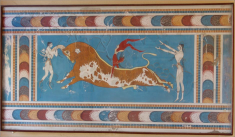Speaker
Description
The High Energy cosmic Radiation Detector (HERD) is one of the prominent space-borne instruments to be installed on board the Chinese Space Station (CSS) in 2027 and is the result of a collaboration among chinese and european institutions. Primary scientific goals of HERD include: precise measurements of the cosmic ray (CR) energy spectra and mass composition at energies up to few PeV, electron/positron spectra up to tens of TeV, CR anisotropy, gamma ray astronomy and transient studies, along with indirect searches for Dark Matter particles. HERD is configured to accept incident particles from both its top and four lateral sides. Owing to its pioneering design, more than one order of magnitude increase in geometric acceptance is foreseen, with respect to previous and ongoing experiments.
In its baseline configuration, HERD is conceived around a deep (~55 X$_0$, 3 λ$_I$) 3D cubic calorimeter (CALO), forming an octagonal prism of approximately 7500 LYSO crystals. Fiber Tracker (FiT) mats are instrumented on all active sides surrounding the calorimeter, in order to accurately determine tracks of impinging particles. Furthermore, a Plastic Scintillator Detector (PSD) is covering the calorimeter and tracker, providing gamma–ray and charged particle triggers, with an additional level of charge measurement. Ultimately, a Silicon Charge Detector (SCD) envelops the above-stated sub-detectors, ensuring an additional determination of the charge. For energy calibration purposes (in the TeV scale), a Transition Radiation Detector (TRD) will be placed on one of the lateral faces. In this work, the latest advancements and scientific objectives of the HERD space mission will be presented along with a detailed overview of ongoing and upcoming activities.
Details
Mr. Dimitrios Kyratzis, Gran Sasso Science Institute (GSSI) & INFN-LNGS, Italy, https://www.gssi.it/people/students/students-physics/item/4756-kyratzis-dimitrios
| Is this abstract from experiment? | Yes |
|---|---|
| Name of experiment and experimental site | High Energy cosmic-Radiation Detector (HERD) |
| Is the speaker for that presentation defined? | Yes |
| Internet talk | No |
